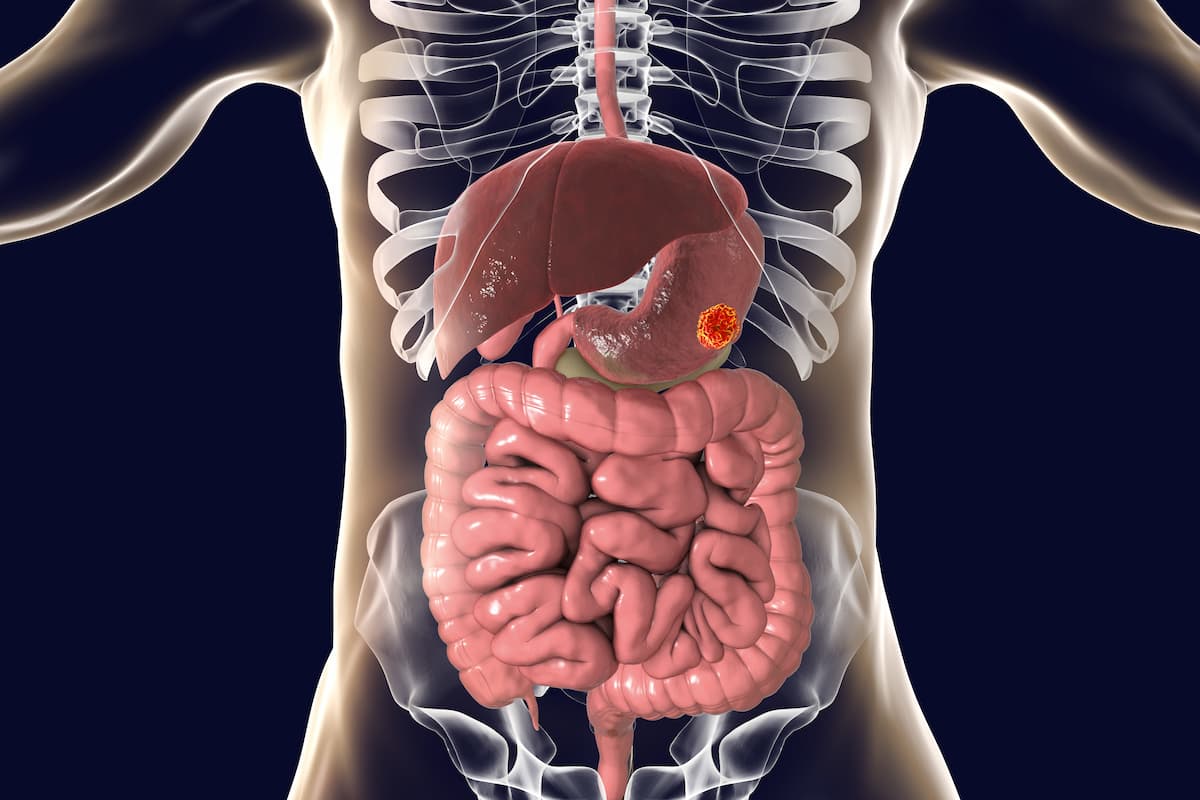Zolbetuximab Combo Should be Considered New SOC in Gastric Cancer Subtype
Efficacy and safety findings from the phase 3 GLOW trial assessing zolbetuximab and CAPOX in CLDN18.2-positive locally advanced or metastatic gastric or gastroesophageal junction adenocarcinoma were consistent with the phase 3 SPOTLIGHT trial, according to an expert from Weill Cornell Medical College
Treatment with first-line zolbetuximab (IMAB362) plus capecitabine and oxaliplatin (CAPOX) yielded statistically significant and clinically meaningful survival benefit compared with placebo in patients with Claudin 18.2 (CLDN18.2–positive, HER2-negative, locally advanced unresectable or metastatic gastric or gastroesophageal (GEJ) adenocarcinoma, according to a presentation on the phase 3 GLOW trial (NCT03653507) given during an American Society of Clinical Oncology (ASCO) Plenary Session.
"Zolbetuximab successfully targets CLDN18.2 and meets a truly unmet medical need in the treatment of metastatic gastric or GEJ adenocarcinoma," according to an expert from Weill Cornell Medical College.

At the data cut-off of October 7, 2022, zolbetuximab plus CAPOX elicited a median progression-free survival (PFS) of 8.21 months (95% CI, 7.46-8.84) vs 6.80 months (95% CI, 6.14-8.08) with placebo plus CAPOX (HR, 0.687; 95% CI, 0.544-0.866; P = .0007). The 12-month PFS rate was 35% vs 19% and the 24-month rate was 14% vs 7% in each respective arm.
“Across multiple pre-specified subgroups, the addition of zolbetuximab was favored [in terms of PFS],” presenting author Manish A. Shah, MD, said in the presentation. “This was true with regard to number of sites, prior gastrectomy, Lauren classification, gender, and age."
Shah, a Bartlett Family professor in gastrointestinal oncology, professor of medicine at Weill Cornell Medical College, and attending physician at New York-Presbyterian Hospital, stated that the GLOW trial met its primary end point of PFS. He also spoke about the study’s implications for clinical practice in this patient population.
“Zolbetuximab successfully targets CLDN18.2 and meets a truly unmet medical need in the treatment of metastatic gastric or GEJ adenocarcinoma,” Shah explained. “GLOW confirmed that zolbetuximab plus chemotherapy is a new standard-of-care treatment for CLDN18.2-positive, HER2-negative, locally advanced or metastatic gastric or GEJ adenocarcinoma.”
Patients with previously untreated locally advanced unresectable or metastatic gastric or GEJ adenocarcinoma were eligible for enrollment on the trial. Additional eligibility criteria included having at least 75% of tumor cells with moderate-to-strong membranous CLDN18 staining, HER2-negative disease, and an ECOG performance status of 0 or 1. Investigators also stratified patients based on region, the number of organs with metastases, and prior gastrectomy.
Investigators of the global, randomized, double-blinded phase 3 GLOW trial compared zolbetuximab plus CAPOX with placebo plus CAPOX. In the experimental arm (n = 254), patients received 800 mg/m2 of intravenous zolbetuximab on day 1 of cycle 1 followed by 600 mg/m2 on day 1 of subsequent cycles once every 3 weeks plus CAPOX. Patients then received 600 mg/m2 of zolbetuximab intravenously once every 3 weeks plus capecitabine for cycle 9 and onwards.
In the comparator arm (n = 253), patients received matched placebo plus the same CAPOX backbone.
Secondary end points of the GLOW trial included overall survival (OS), objective response rate (ORR) and duration of response (DOR) per RECIST v1.1 guidelines by independent central review, and safety.
The median patient age was 61.0 years (range, 22-82) in the zolbetuximab arm and 59.0 years (range, 21-83) in the placebo arm. In the zolbetuximab and placebo arms, respectively, most patients were male (62.6% vs 61.7%), from Asia (61.8% vs 62.5%), had 0 to 2 organs with metastases (74.4% vs 74.3%), and had not received prior gastrectomy (70.5% vs 70.4%). Additionally, most patients in each respective arm had tumors in the stomach (86.2% vs 82.6%); had mixed, other, or unknown Lauren classification tumors (51.2% vs 44.3%); and had an ECOG performance status of 1 (57.3% vs 56.8%).
The median OS was 14.39 months (95% CI, 12.29-16.49) in the zolbetuximab arm vs 12.16 months (95% CI, 10.28-13.67) in the placebo arm (HR, 0.771; 95% CI, 0.615-0.965; P = .0118). Additionally, the OS rates in each respective arm were 58% vs 51% at 12 months and 29% vs 17% at 24 months. Overall, 47% of patients in the zolbetuximab arm and 55% in the placebo arm received subsequent anti-cancer treatment.
“Once again, across all these pre-specified subgroups, zolbetuximab is, indeed, favored,” Shah said regarding the OS subgroup analysis.
Patients in the zolbetuximab arm had an ORR of 53.8% (95% CI, 46.58%-60.99%), which included a complete response (CR) rate of 3.1%, a partial response (PR) rate of 50.8%, and a median DOR of 6.28 months (95% CI, 5.39-8.28). In the placebo arm, patients had an ORR of 48.8% (95% CI, 41.76%-55.84%), which included a CR rate of 1.5%, a PR rate of 47.3%, and a median DOR of 6.18 months (95% CI, 4.53-6.41).
In the zolbetuximab and placebo arms, respectively, any-grade treatment-emergent adverse effects (TEAEs) occurred in 98.8% and 98.0% of patients. Additionally, grade 3 or higher TEAEs occurred in 72.8% and 69.9% of patients and serious TEAEs occurred in 47.2% and 49.8% patients, respectively. Overall, 21.7% and 15.7% of patients in each respective arm discontinued treatment due to treatment-related AEs.
The most common any-grade TEAEs in the zolbetuximab and placebo arms, respectively, included nausea (68.5% vs 50.2%) and vomiting (66.1% vs 30.9%). Grade 3 or higher nausea occurred in 8.7% and 2.4% of patients and vomiting in 12.2% and 3.6% of patients, respectively.
“Most of the nausea or vomiting was experienced in cycle 1,” Shah said. “By cycle 2, any nausea or vomiting was less than 10% and equal in both arms.”
Reference
Xu R, Shitara K, Ajani JA, et al. Zolbetuximab + CAPOX in 1L claudin-18.2+ (CLDN18.2+)/HER2− locally advanced (LA) or metastatic gastric or gastroesophageal junction (mG/GEJ) adenocarcinoma: primary phase 3 results from GLOW. J Clin Oncol. 2023;41(suppl 36):405736. doi:10.1200/JCO.2023.41.36_suppl.405736